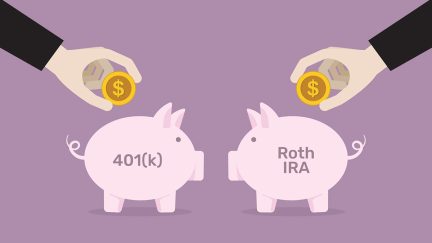Get more! Sign up for PLANSPONSOR newsletters.
IRS Puts Out Final Rule for Electronic Benefit Notices, Elections
An IRS announcement said that the rule ( TD 9294 ) adds Section 1.401(a)-21 to the Treasury Department regulations dealing with standards on how plan sponsors can use online methods to allow workers to provide written notices and allow for written participant elections for retirement plans, employee benefit arrangements, or individual retirement plans. The IRS said that only this rule applies for those notices and elections that must be in writing.
The plans affected by the new rule include 401(a) plans (qualified retirement plans), 403(a) plans (qualified annuity plans), 403(b) plans (annuity plans for tax-exempt and educational entities), simplified employee pensions under Section 408(k), savings incentive match plans for employees under Section 408(p), and eligible governmental plans under Section 457(b).
The standards for electronic participant elections generally follow the 2000 rules, the IRS said, but a plan does not have to allow the election to be made using paper if an electronic system is available to the participant. Participants must effectively be able to make elections that are secure, to review and change the election, and to receive confirmation of the election within a reasonable time period.
For those notices or elections not having to be in writing, the IRS said the final rule would function as a safe harbor. Plans could still use prior guidance issued on electronic notices and elections, such as a final rule on retirement plan distribution notices. The rule is effective Friday and applies to notices and elections made on or after January 1, 2007. The IRS proposed the rule in July 2005 (See Feds Unveil Electronic Benefits Data Transmission ), and held a hearing on the proposed rule in November 2005.
Notices, elections or consents that must be made in written form as required by the tax code and the parallel provisions of the Employee Retirement Income Security Act (ERISA) include, according to the announcement.
- a notice under tax code Section 402(f) describing the rights participants have to roll over their plan distributions to qualified retirement plans or individual retirement accounts,
- a notice under Section 411(a) (11) on participants’ benefit commencement rights,
- a notice under Section 204(h) detailing to participants a significant reduction in rate of future benefit accrual, and
- spousal consent elections under Section 417(a) (2) relating to joint and survivor annuities.
Officials said the final rule also applies to accident or health plans under Sections 104(a)(3) or 105; cafeteria plans under Section 125; educational assistance programs under Section 127; qualified transportation fringe benefits under Section 132; Archer medical savings accounts under Section 220; and health savings accounts under Section 223, the IRS said.
On the other hand, the rule does not come into play for notices or other disclosures required under ERISA Titles I or IV, which are under the interpretive and enforcement authority of the Labor Department (DoL) or the Pension Benefit Guaranty Corporation (PBGC), such as summary plan descriptions, notices of benefit suspensions, and health care continuation coverage rights.
The final rule contains many of the requirements of the proposed rule, IRS said including a mandate that a notice or other communication that is provided electronically must still be provided in a timely manner and has to include the same material that would have been included in the paper version. Not only that, but the notice also must be understandable by the recipients, the IRS said.
The electronic system used must alert the recipient to the significance of the information, provide instructions on how to access the notice, and be as accessible and as understandable as a paper notice, IRS said.
To satisfy the federal E-SIGN law of 2000, the final rule makes more clear that the electronic record of a notice or election must be in a form that can be kept and later reproduced for reference, or the record’s legal effect, validity, or enforceability may be denied, the agency said.
Plans may provide notices using the “consumer consent method,” where the participant agrees to receive the communication in an electronic format, yet has the right to get it in paper; or the “alternative method,” which is similar to requirements of the 2000 final regulations, the IRS said.


